Our token Pointer, Joe T.Dog (“Joe”). We inherited Joe when a family friend died. Joe, we loved you so much. Our lives were better for knowing you!
Joe T.Dog. 2009-2020
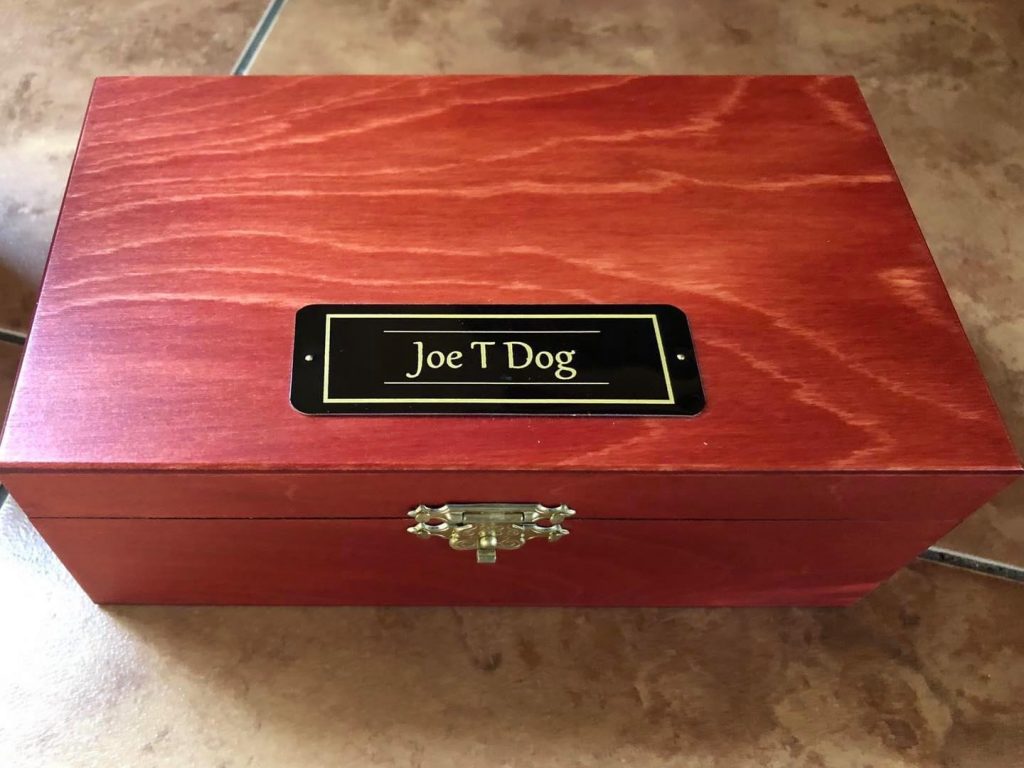
Our token Pointer, Joe T.Dog (“Joe”). We inherited Joe when a family friend died. Joe, we loved you so much. Our lives were better for knowing you!
Joe T.Dog. 2009-2020
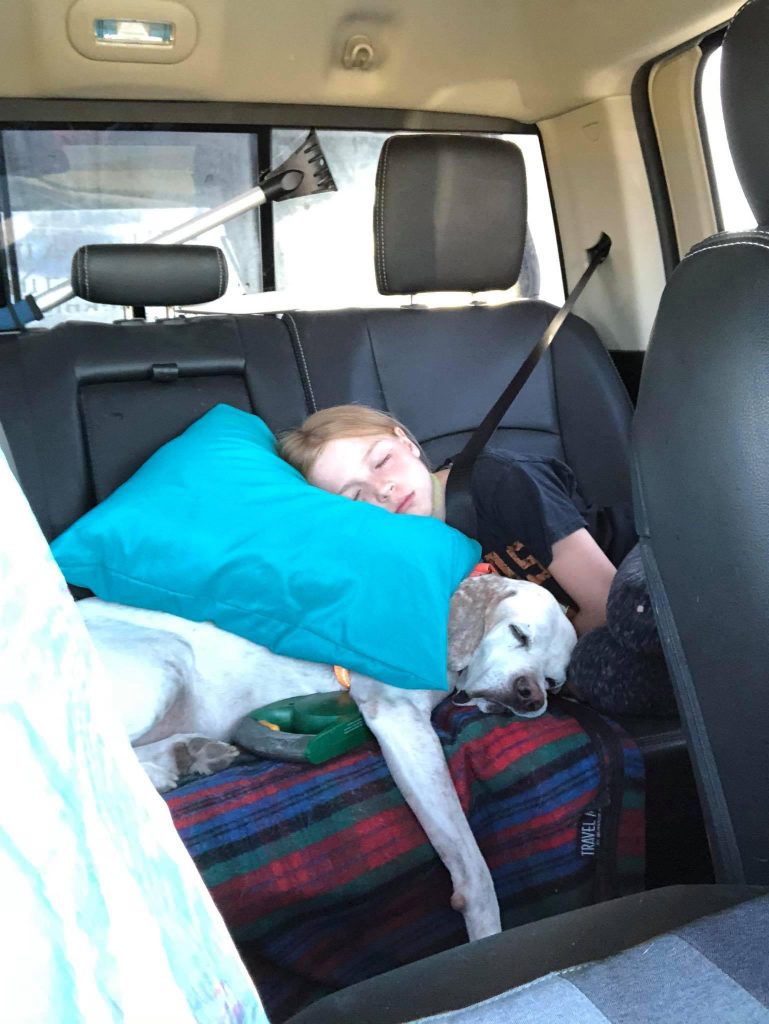
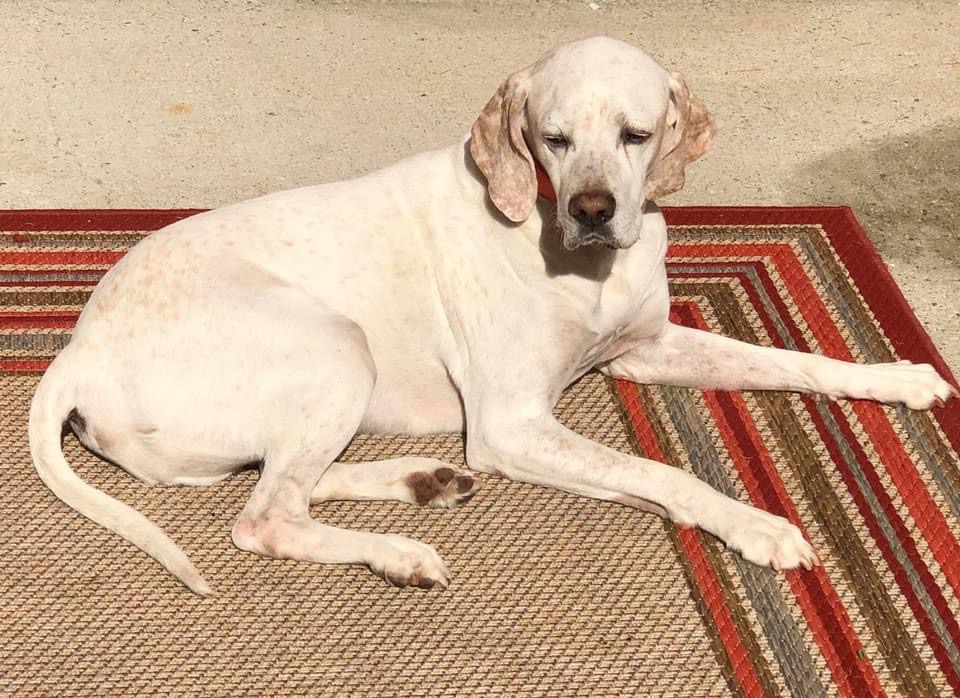
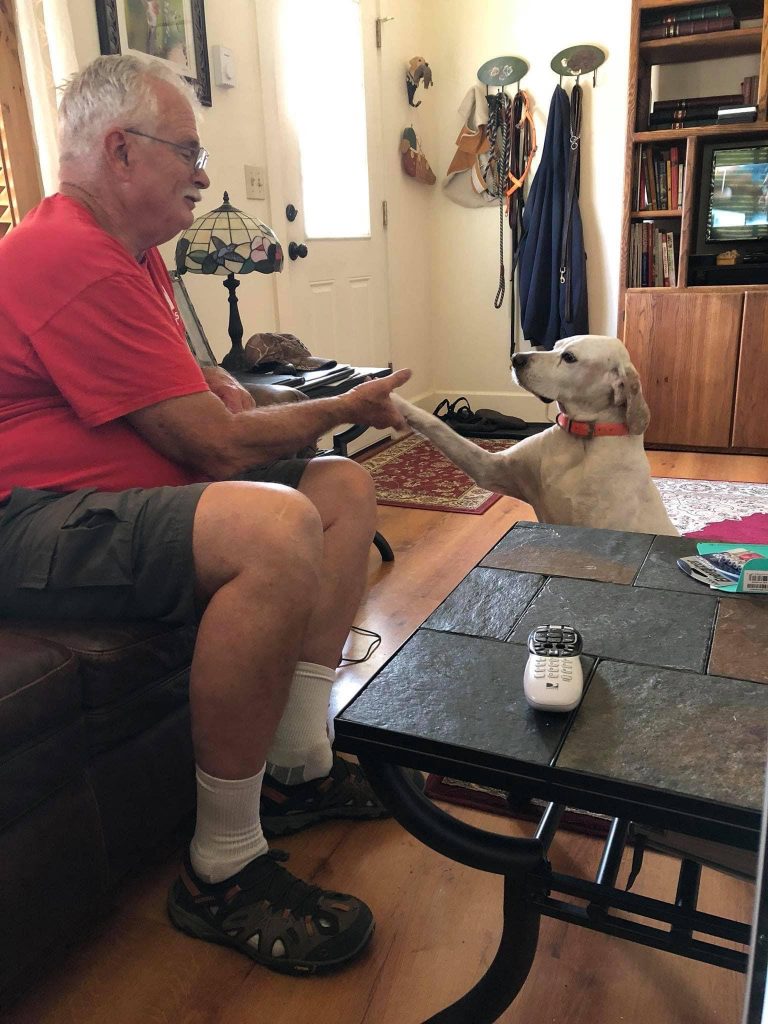
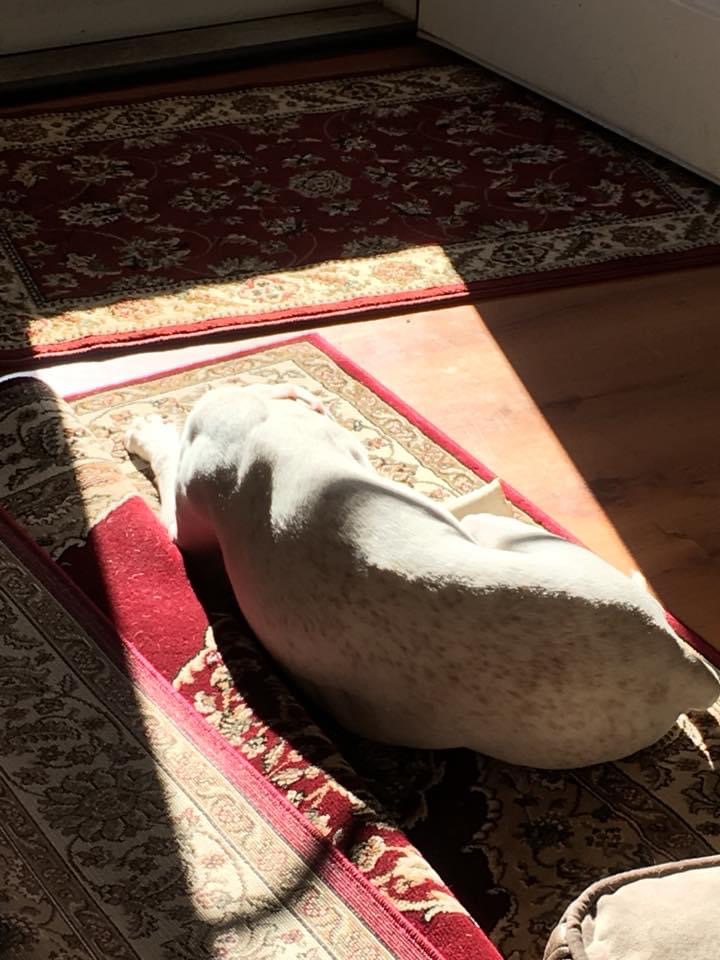
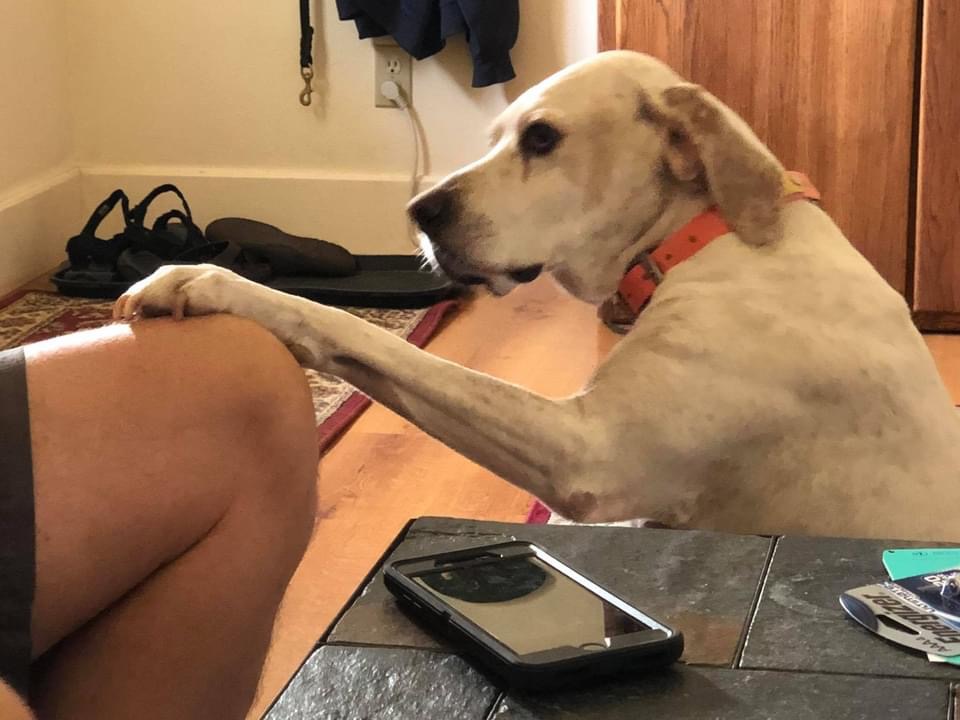

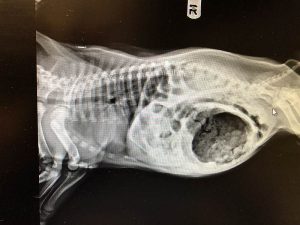
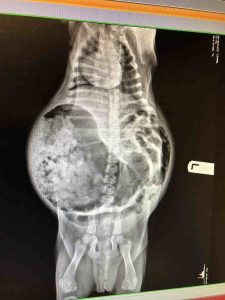 This is the radiologist’s review:
This is the radiologist’s review:
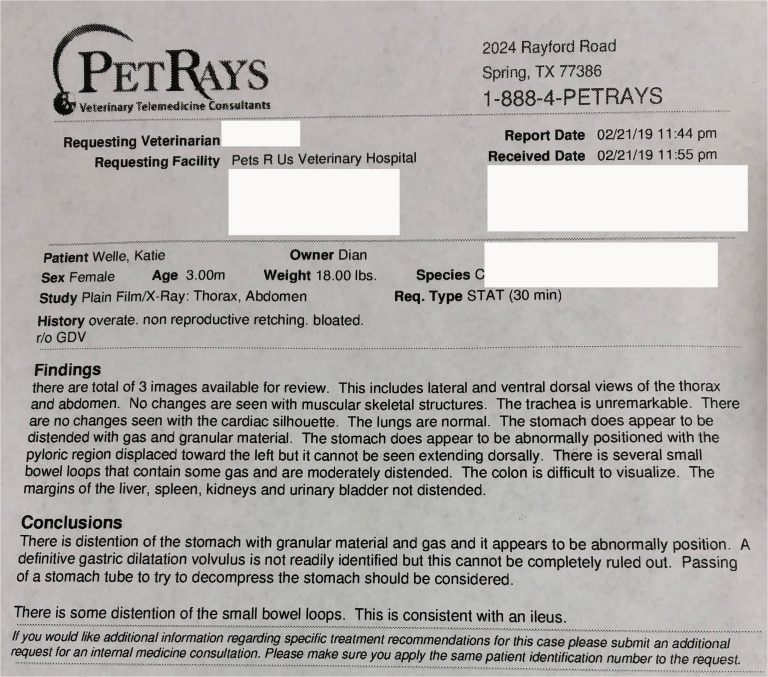 The Dr. told us to go home, and that he would call us the moment he finished the surgery. Reluctantly, we left our precious baby in his care, and prayed. We knew all the risks of this condition, and being a retired ER Nurse, I knew too much, which led me to believe I would never see Katie Bell alive again.
When the stomach twists, it immediately cuts off all circulation to the stomach and the bowels. The spleen is often involved in the torsion as well. Hemorrhage is a real risk when the spleen is damaged, and because the torsion has effects on the whole body, including the heart, the surgery and post-op period are gravely complicated. The risk of death is absolute in an adult dog (about 50% depending on the amount of time from torsion to surgery), and we were dealing with a baby. No veterinarian I have spoken to since, has ever seen GDV in a puppy, although literature states it can happen, and none would expect a puppy to survive.
Katie Bell was in the skilled hands of Dr. Habeeb, and absolutely was in the hands of God.
The Dr. told us to go home, and that he would call us the moment he finished the surgery. Reluctantly, we left our precious baby in his care, and prayed. We knew all the risks of this condition, and being a retired ER Nurse, I knew too much, which led me to believe I would never see Katie Bell alive again.
When the stomach twists, it immediately cuts off all circulation to the stomach and the bowels. The spleen is often involved in the torsion as well. Hemorrhage is a real risk when the spleen is damaged, and because the torsion has effects on the whole body, including the heart, the surgery and post-op period are gravely complicated. The risk of death is absolute in an adult dog (about 50% depending on the amount of time from torsion to surgery), and we were dealing with a baby. No veterinarian I have spoken to since, has ever seen GDV in a puppy, although literature states it can happen, and none would expect a puppy to survive.
Katie Bell was in the skilled hands of Dr. Habeeb, and absolutely was in the hands of God.
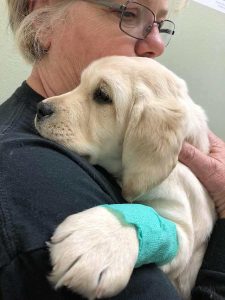 The Dr. rotated her stomach back into position (yes, it was in full torsion), and her spleen and stomach were checked for damage. Her stomach was intact (no rupture), and as it re-profused, it looked like the tissue was going to be okay. Her spleen had a small amount of discoloration at the tip, but showed signs of re-profusion immediately. A tube was passed down the esophagus and into her stomach, to decompress the stomach, which was full of gas, fluid, and food. He did not surgically enter the stomach. A gastropexy was performed whereby the stomach is tacked to the body wall behind the rib cage down low, so that it could not twist again out of position, however, due to the delicate nature of her tissues, he was not confident that the gastropexy would hold. She did suffer some cardiac dysrhythmia related to decreased coronary perfusion and re-perfusion injury during the surgery.
A few hours later we got the call that she wasn’t just doing well, she was wagging her tail. He stated she was fully awake within 15 minutes of the surgery. Sedated, she would now sleep, and so could we. The next few days could bring heartache, as complications often happen within days of this surgery. Sometimes, the necrosis (death of tissue) is not fully realized when the surgery is complete, and death of stomach, bowel, heart, lung and spleen tissues could advance well after the surgery is complete.
Three days later, Katie Bell was released from the hospital. A good Veterinarian friend suggested human baby onesies, rather than make this baby wear a cone, as long as she did not fuss with the outfit. This was a precious tip! Not only was it effective, it was clean, and we bought several, so that they could be changed frequently, and darn it… they were darling.
We stayed with our daughter (in California) for a few more days, to be sure she would not suffer any complications, and because Katie Bell was on so many medications (about six), we wanted to make sure our trip home to Idaho was as risk-free as possible. I am very fortunate to have a number of friends who are Veterinarians, and breeder friends who have trusted vets, that we had the names of several who would see her at a moment’s notice, night or day, on our two day trip home. At least we thought it would be a two day trip home. We were wrong. A snow storm hit us when we reached Klamath Falls Oregon, and by the time we got to Bend Oregon, we knew we had to stay put. None of the Veterinarians we had lined up were in Bend. We took her to Central Oregon Animal Hospital and had her rechecked for safety by Dr. Douglas, wanting him to see her stable in the event she suffered any change in condition. What a kind and thoughtful Dr.!! She was in great condition (for a puppy who should have died), and we were much more comfortable knowing she had been rechecked. This was the second Veterinarian we had seen with her that was not familiar to us, which is scary when you have come to trust your pet to the care of well-vetted doctors.
We were snowed in for three days. We had her rechecked by her own vet the day after we got home. Needless to say, like the others, he just shook his head that this puppy was alive, and acting perfectly normal.
Katie is a *very* rapid eater, and immediately after surgery we realized the need for special bowls to slow her down.
The Dr. rotated her stomach back into position (yes, it was in full torsion), and her spleen and stomach were checked for damage. Her stomach was intact (no rupture), and as it re-profused, it looked like the tissue was going to be okay. Her spleen had a small amount of discoloration at the tip, but showed signs of re-profusion immediately. A tube was passed down the esophagus and into her stomach, to decompress the stomach, which was full of gas, fluid, and food. He did not surgically enter the stomach. A gastropexy was performed whereby the stomach is tacked to the body wall behind the rib cage down low, so that it could not twist again out of position, however, due to the delicate nature of her tissues, he was not confident that the gastropexy would hold. She did suffer some cardiac dysrhythmia related to decreased coronary perfusion and re-perfusion injury during the surgery.
A few hours later we got the call that she wasn’t just doing well, she was wagging her tail. He stated she was fully awake within 15 minutes of the surgery. Sedated, she would now sleep, and so could we. The next few days could bring heartache, as complications often happen within days of this surgery. Sometimes, the necrosis (death of tissue) is not fully realized when the surgery is complete, and death of stomach, bowel, heart, lung and spleen tissues could advance well after the surgery is complete.
Three days later, Katie Bell was released from the hospital. A good Veterinarian friend suggested human baby onesies, rather than make this baby wear a cone, as long as she did not fuss with the outfit. This was a precious tip! Not only was it effective, it was clean, and we bought several, so that they could be changed frequently, and darn it… they were darling.
We stayed with our daughter (in California) for a few more days, to be sure she would not suffer any complications, and because Katie Bell was on so many medications (about six), we wanted to make sure our trip home to Idaho was as risk-free as possible. I am very fortunate to have a number of friends who are Veterinarians, and breeder friends who have trusted vets, that we had the names of several who would see her at a moment’s notice, night or day, on our two day trip home. At least we thought it would be a two day trip home. We were wrong. A snow storm hit us when we reached Klamath Falls Oregon, and by the time we got to Bend Oregon, we knew we had to stay put. None of the Veterinarians we had lined up were in Bend. We took her to Central Oregon Animal Hospital and had her rechecked for safety by Dr. Douglas, wanting him to see her stable in the event she suffered any change in condition. What a kind and thoughtful Dr.!! She was in great condition (for a puppy who should have died), and we were much more comfortable knowing she had been rechecked. This was the second Veterinarian we had seen with her that was not familiar to us, which is scary when you have come to trust your pet to the care of well-vetted doctors.
We were snowed in for three days. We had her rechecked by her own vet the day after we got home. Needless to say, like the others, he just shook his head that this puppy was alive, and acting perfectly normal.
Katie is a *very* rapid eater, and immediately after surgery we realized the need for special bowls to slow her down.



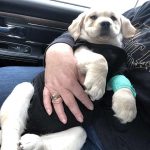


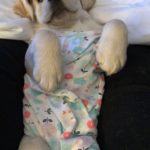
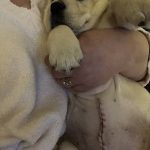

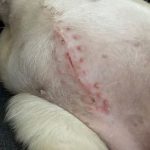
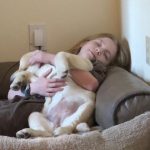
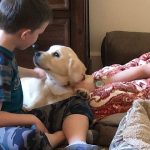
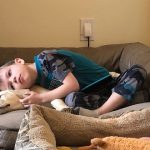
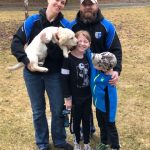
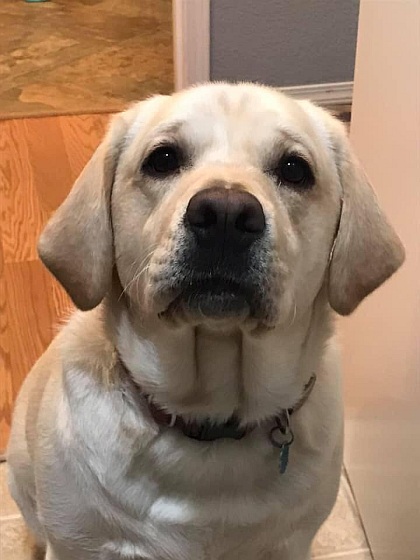

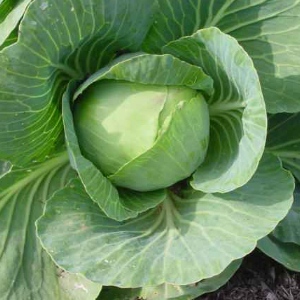 I have had several new canine mothers with mastitis. For many years, the only thing I could do was apply ice packs or heat packs to give her relief, waiting for antibiotics to work. One day, I found another source of help…
I have had several new canine mothers with mastitis. For many years, the only thing I could do was apply ice packs or heat packs to give her relief, waiting for antibiotics to work. One day, I found another source of help…
Seven years ago my youngest daughter had her first baby. A few days later she had so much breast engorged that she was in agony. We’re talking skin splitting hard and swollen. She had a reasonable amount if redness. I was worried she was quickly progressing to mastitis. She was pale and crying. We had tried warm compresses and cool. Nothing helped. Her daughter could hardly latch, let alone nurse well, because of the intense engorgement. I couldn’t convince her to seek medical help, her husband felt helpless too. She was in so much pain, we *all* felt helpless. She wanted to wait until the next day to seek medical attention.
I had read that cabbage leaves help with engorgement and early mastitis. Now, I am an old ER Nurse, and I am mighty fond of traditional medicine, and skeptical of various home remedies, and respectfully cautious of others. Some is pure bunk, and some work, even to a dangerous degree if a patient doesn’t disclose that they’re using them. So, I was skeptical at best. BUT, I suggested her husband go buy a cabbage. I challenged her (as a Physician’s Assistant, she was more than skeptical too), saying it surely couldn’t hurt anything, and figured it would give us a good laugh later for having tried. She dutifully packed some in her bra and went upstairs in tears of agony (literally) to lie down. One hour later, she nearly skipped into the room! “I’m SO much better!!”. Her previously pale complexion was pink, and that look of agony gone from her face! Her tissue was far more relaxed, no longer red, and the baby was finally able to nurse. I was astounded, as was everyone else. No placebo affect here, as nobody thought it would help at all.
So, medical opinion is mixed, as to it’s anti-inflammatory properties. Some Dr’s advise it. Some say it is bunk. An extract of cabbage in ointment form was tested, and had no positive effects. It seems to only work in leaf form. Cold, room temp or cooked doesn’t seem to make a difference (but I am sure cool feels good on that painful area). Some sources caution that it should only be applied 20 min/3 times per day, or milk production is affected.
So, when I had a litter following the episode with my daughter, and my girl got an early mastitis, I quickly turned to cabbage, and kept puppies working at keeping the milk flowing (thinking the next morning I would have her at the vet for antibiotics). She had a slight temp, was swollen, red, restless (pain) and very engorged. The next morning, she was resolved. Now, maybe she would have been regardless, but I can only report what happened. I will say, that no home treatment should ever replace proper medical treatment As I said, my bitch was scheduled to go the the vet the next morning, however, she completely resolved.
My daughter (a PA in the Army) Responds:
“Trust me… this is something you should absolutely believe without hesitance. I had frozen a wet towel and stuffed that in my bra… it did nothing but wet my shirt and bra and heat up VERY quickly. The leaves had an IMMEDIATE effect. The first thing I noticed was the intense cool and an almost immediate decrease in the pulling of my skin. I was so uncomfortable, I’d been pulling my shoulders up to my ears and I was finally able to relax them (along with the rest of me). It didn’t take long to warm up the chilled cabbage leaves, but they still felt amazing.
Just try it when you have a bitch (or woman) who needs it. Some women say it doesn’t work for them, but I’m telling you, NOTHING else worked for me and it was more miserable than the birth itself. At least I thought so at the time. This was the ONLY thing that gave me any relief.”
________________
Check her mammary glands twice daily:
Prevention:
Observe for the following (remember, mastitis is a bacterial infection):
James (Blue Knight Rebel With A Cause – Championship Major Pointed) was the sweetest dog one would ever have the pleasure to meet. His nickname, and “his song” was Sweet Baby James. The first photo here was at 9 weeks. The last play photos were taken just a few weeks before his death, just before his 11th birthday. He made it less than a week past that birthday. The last photo was taken when we said goodbye. A mass on his spine took his mobility and life. His favorite things: Making a nest with toys. Cuddling with mom (he was an unashamed mamma’s boy). Swimming… oh, how he loved swimming! Oh Sweet Baby James, how we will miss you! Our heart’s are broken.


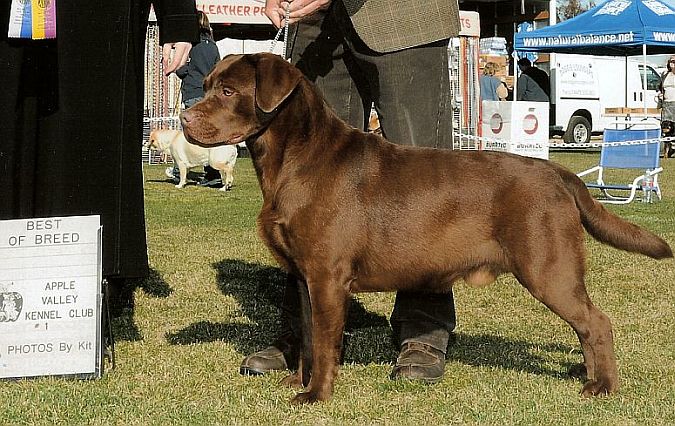

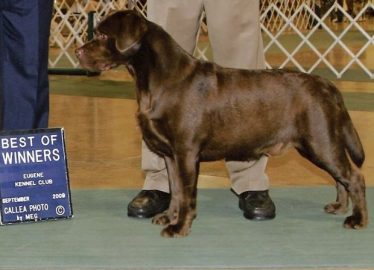
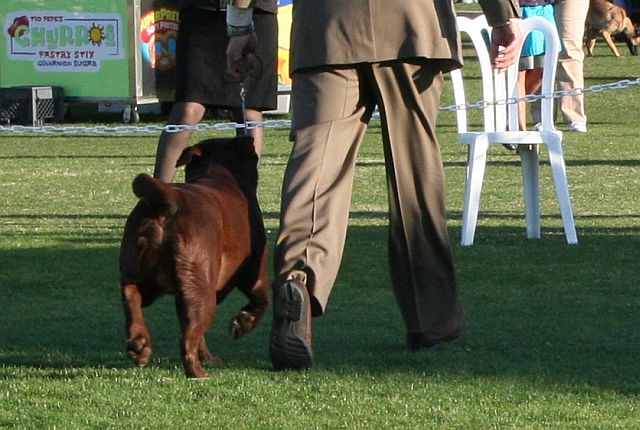

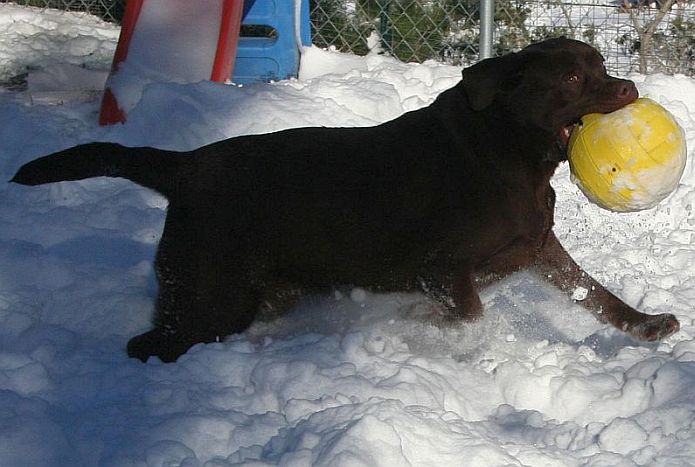
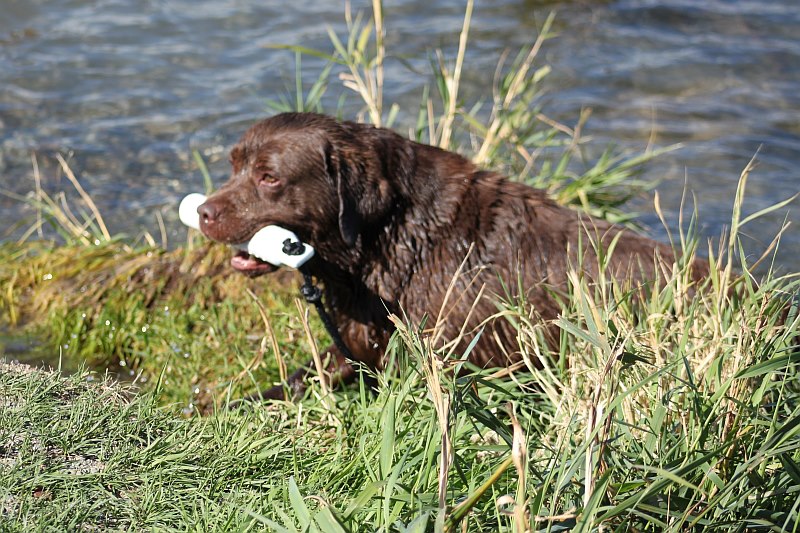
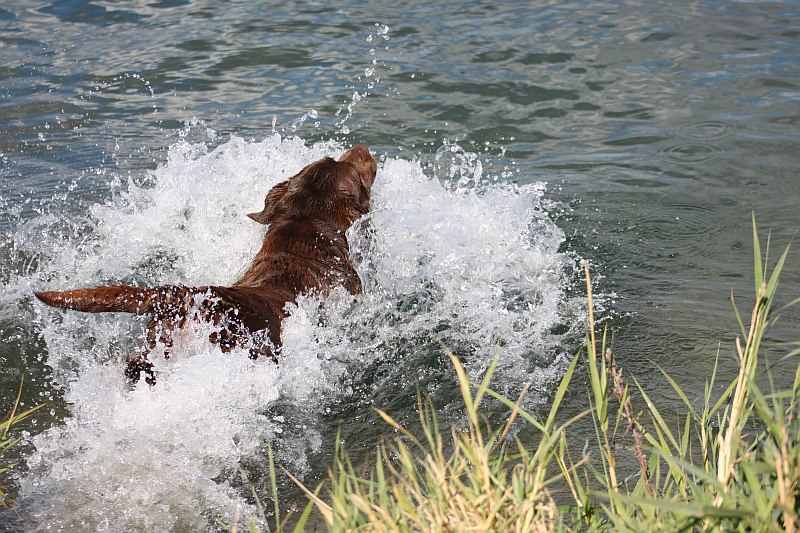
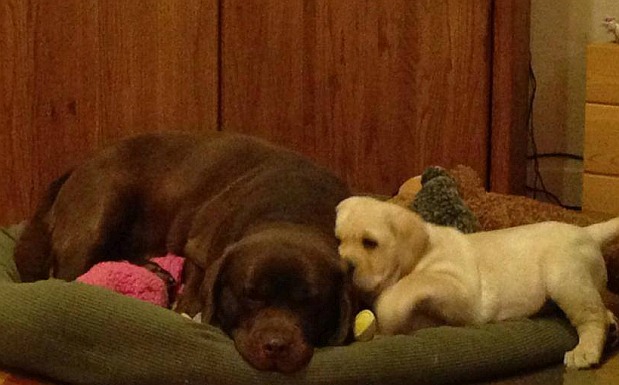
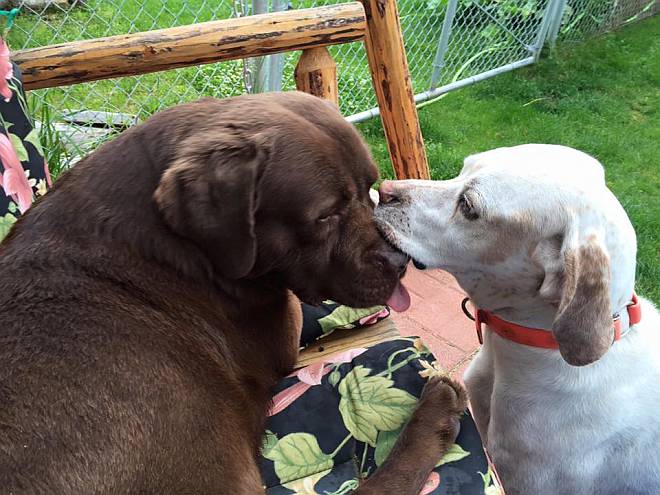
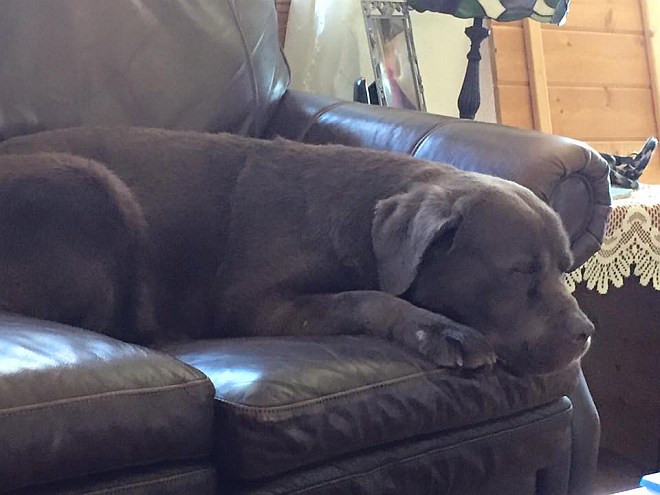
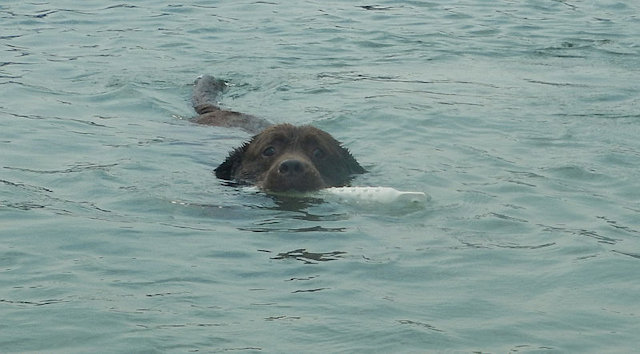
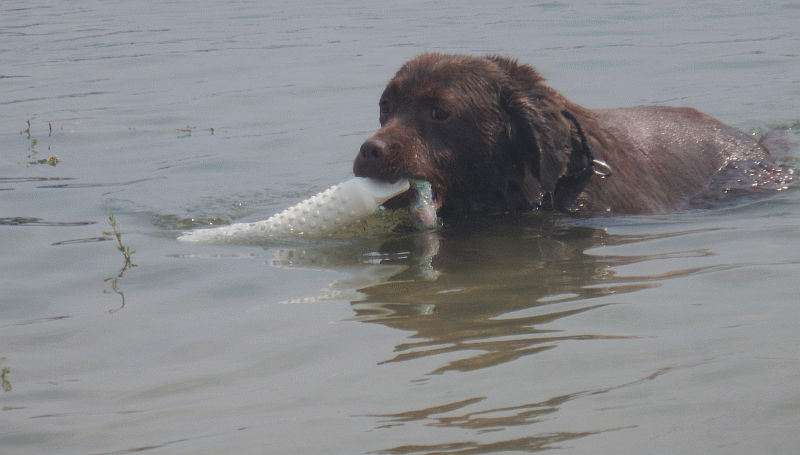
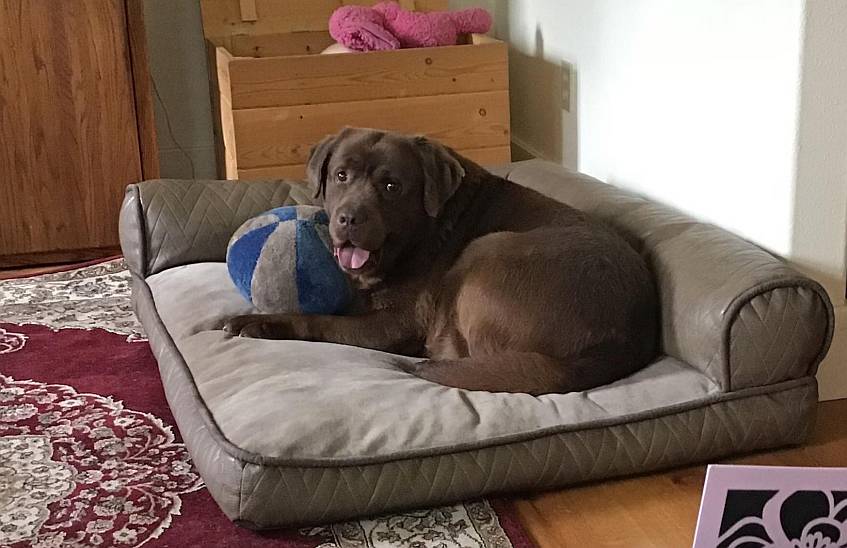
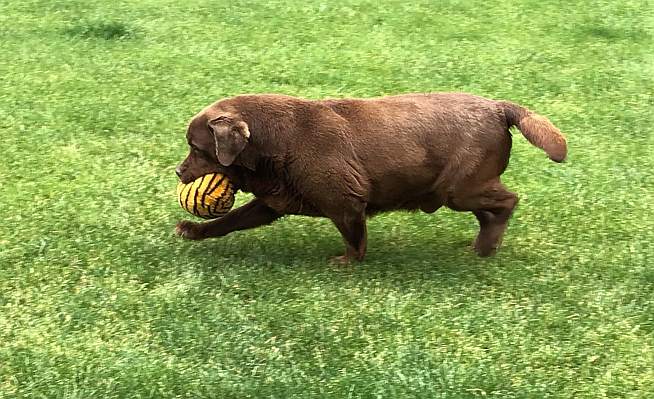

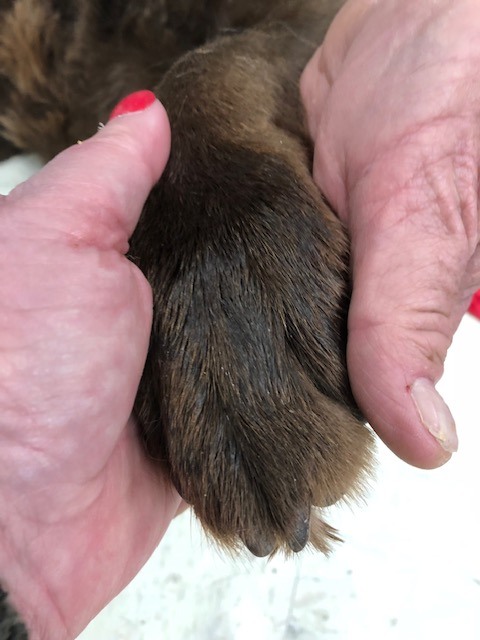
Spring took a long time coming here in North Idaho, making growing our garden a bit difficult at first. The starts all had a difficult time as we tried to harden them over. If you’re interested in our “homesteading” efforts, you can see them on this Facebook page. The dogs show up there from time to time:
https://www.facebook.com/bkhomestead/
The dogs did fine through the winter, as usual. The truth is, we probably keep them too warm in their ‘big dog house’ (they have their own wood-burning stove and two backup electric heaters that we can deploy if necessary, or if we’re out of town. Now, just so you know, the word “kennel” has legal and business meaning here in Bonner County, so please note that the word “kennel” here is not meant to describe a business – it’s just the big dog house. We call their crates their kennels, we call the building a kennel, and basically anything they’re told to get into, we tell them to “kennel”. So, Dear Bonner County, please note that! The kennel is so well insulated, that it maintains the heat very well, and mornings show all of the dogs coming out to lay on the snow, either because Labs love to lay in snow, or because they need to cool off. Heating the kennel is necessary for the water pipes. We try to keep the dogs a comfy 55 degrees, which is the temp they do best at (warmer makes them pant).
We have had he dogs to the river. Because of various surgeries and company this summer, we were not able to get them for a swim until recently, and boy did they have a ball!! To see images of the seasons each year, be sure to click on our “images” link at the top. I’m also adding a direct link here:
http://www.blueknightlabs.com/kennelcam/spring-summer2018/spring-summer2018.html
I REALLY have to get Mariah and Luna’s DNA’s sent in. I’ll be doing this soon, so that we have them by the fall.
Believe it or not, Dan and I are in winterization mode already. We’re not getting any younger, and it takes us time to have several cords of wood ready to keep the kennel warm. We also want the split wood to have time to dry more. One never knows how hard a winter nature has in store for No. Idaho. Best to be ahead of the curve.
Snow is on the ground, and our increasing temperatures have turned walkways into ice. Every day, one or two of the dogs come in and get undivided attention. Today was Miley’s turn. Last week I noticed she was getting pretty dirty, as the snow starts to melt and mud season is starting, Miley, being yellow, is the first to show the effects of a wet winter thaw (her yellow daughter will likely be next). Miley also takes great pleasure in rubbing her body on the chain link in her kennel, transferring black carbon onto her coat. It’s nearly impossible to wash out, but seems quite easy to rub into the coat. I couldn’t take it one more moment. Today we’ll be having a winter spa day!
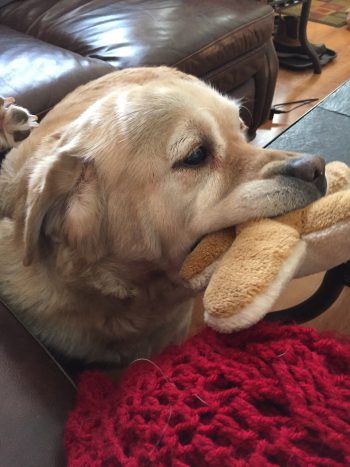
Miley, we’re off to the bathtub!
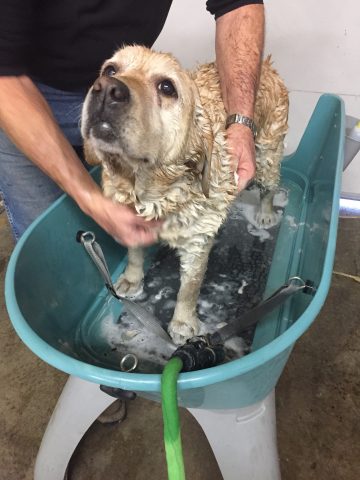
Our booster bath tubs are a Godsend. Yay for not having to bend to ground level to wash a dog! We can move it close to the large kennel door, and put the drain hose under the closed door, allowing it to drain outside, while keeping the kennel fairly dry and warm (except for the obligatory wet dog shaking, which manages to wet a six-foot circumference). She was so dirty, we couldn’t even work up suds with a ton of shampoo.
No doubt someone is going to ask what doggie shampoo we use, so this is where I tell you to listen to your Vet if you want to be sure, but in truth, we use human shampoos. I use baby shampoo on the face (no tears), and whatever shampoo I happen to have laying around on the rest of them. I DO NOT ever use a conditioning shampoo or a conditioner on a Lab. Their coat is supposed to be hard to the touch to properly shed water. When I am shampooing for a dog show, I do it a week or so before the show if they need a bath at all, and I usually use T-Gel shampoo on the blacks, to get rid of dandruff. If a Lab isn’t visibly dirty, the best bath for a show is just a good swim or hosing down. Yay for a wash-and-wear breed!
Bath time is an important time for us. You would be surprised how even while petting and playing with a dog, you can miss a suspicious lump or a cut. We’ve made it a practice to use bath time to do a critical hands-on exam, to physically go over each dog, feeling every inch of their bodies for any physical anomaly that may have come up. Once wet, and underneath that thick coat, we have found things our hands never detected before. It’s a good practice. All Miley had was that healing scratch under her left eye (she scratched her eye a couple of weeks ago and lost the hair around the scratch), and the scars on her chin that she has had for a long time (that’s another story for another day).
Our industrial blow dryer makes fast work of drying a dog, and quickly gets rid of shedding hair. It’s far better than a brush! I’ve had this dryer for better than 15 years. It is one of our most valuable possessions. Her groaning in response to being dried, spoke to how good that forceful/warm air stream feels.
As I type this, Dan is still out in the kennel trying to clean up the fur it blew off Miley, onto every surface of the kennel building. That’s one downside to winter baths – you can’t blow dry the dog out in the snow.
After a lot of soap, rinsing and drying, a nicely clean Miley ran to the back door and thought briefly about rolling in the mud next to the steps. I caught her just as she was headed for it and a firm “NO” stopped her (thank heavens). What is it about being clean that a dog can’t stand? It never fails that a sparkling clean dog will quickly roll across the lawn, in the bushes, in mud, or in a puddle.

Attention to the feet comes after the bath. Hair on the bottom of their feet probably keeps their feet warm in the snow, but when the paths turn to ice, their hairy feet have little traction ability. Skipping in the ice or wood floors is an invitation to injury. It has become habit, that after a bath, we check feet and nails. As you can tell, Miley was WAY overdue!
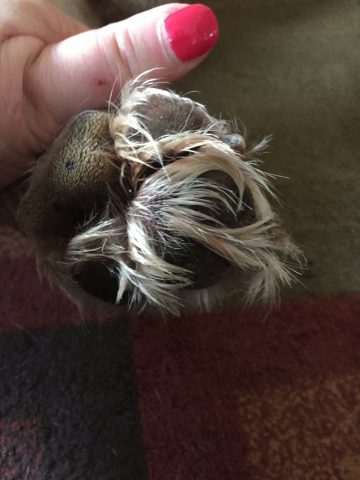
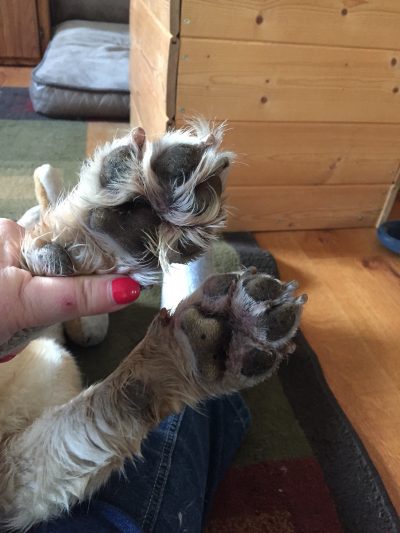
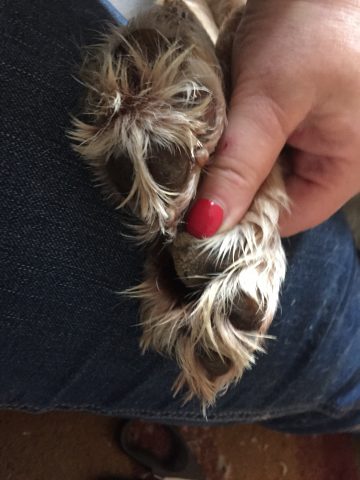

Now she can show off. There is nothing like the feeling of having a shower and pedicure!
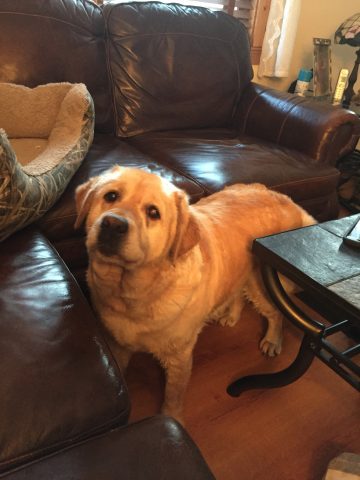

___________________
The dog bath is found at: https://www.boosterbath.com/
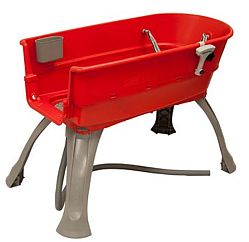 The blow dryer may be found here: https://k9dryer.com/product/k-9-ii-dog-dryer/ – shop around for better pricing on similar items.
The blow dryer may be found here: https://k9dryer.com/product/k-9-ii-dog-dryer/ – shop around for better pricing on similar items.
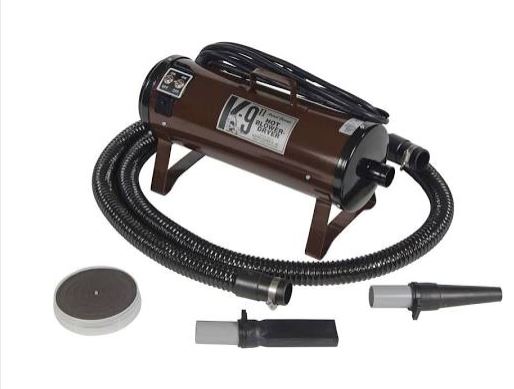
We have snow on the ground, icicles on the eves, and the air is crisp. Winter marks a time of quiet here. We and the dogs gravitate to the nearest warm spot, and use this time for quiet time and rejuvenation.
We had Rumble spayed on Jan 2nd. She has given us, and friends, a few young ones to run on. I hope they inherited her sweet/eager to please temperament and her beautiful expression. Spaying her was like closing a door, and a little sad, although it was due (she’s eight).
James (10), Rumble(8) and Miley(8) are the last three on a group of dogs we brought with us when we moved to Idaho in 2009. The girls were just babies! Little did we know then, that medical problems would bring us to the reality that we must place a large number of the dogs we came with. Our dreams seemed shattered. We gave away some lovely dogs, because that was the right thing to do, but a lot of us went with them. We hear from their owners often, and they are living wonderful lives. What more could we ask for?
We naturally wind down as we age, and that’s true for everything. We continue on, but at a slower, more subdued pace. So it is for dog fancy as well.
We have no intention of disappearing, and we have several young dogs to carry the torch. Each one of them goes back to our original dogs. They carry on the hopes and dreams that we had when we began. They represent nearly 40 years of hard work and careful planning. Mariah, Luna, Dahlia, Rose and Amaya are the living legacy of all who came before them. This is their time!
Ecclesiastes 3:1–8 tells us:
There is a time for everything, and a season for every activity under the heavens:
a time to be born and a time to die,
a time to plant and a time to uproot,
a time to kill and a time to heal,
a time to tear down and a time to build,
a time to weep and a time to laugh,
a time to mourn and a time to dance,
a time to scatter stones and a time to gather them,
a time to embrace and a time to refrain from embracing,
a time to search and a time to give up,
a time to keep and a time to throw away,
a time to tear and a time to mend,
a time to be silent and a time to speak,
a time to love and a time to hate,
a time for war and a time for peace.
Luna Never fails to make us laugh! She comes in the house and one-by-one removes her favored toys from the toy box. As she removes each one, she will parade it around and show it off, then lie near it, admiring each in turn, before she goes on to the next. She covets her toys. If her toy of choice is below another in the box, she’ll move the top one aside, then choke herself to get the lowest one. Some we keep outside, and she has her stash there too. This takes most of the day, and by the end of the day, the den is filled with toys, and a contently sleeping dog!
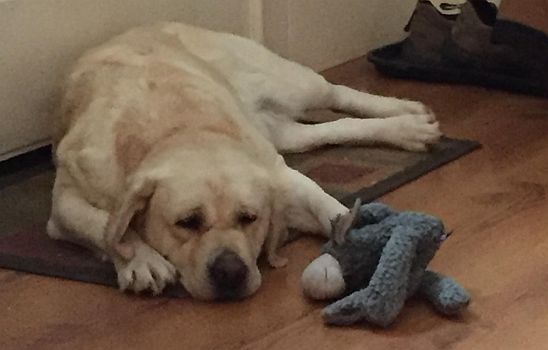

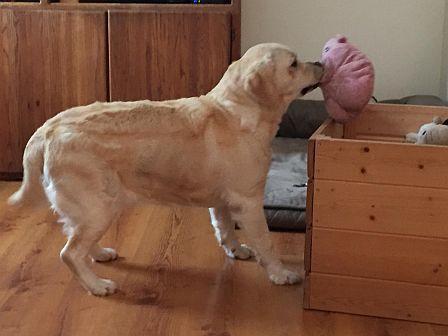
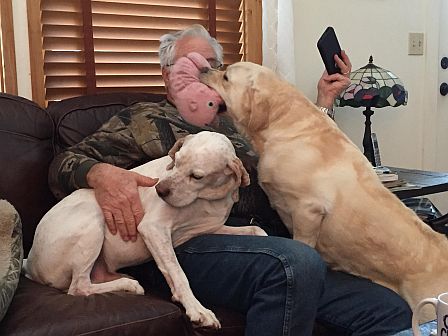
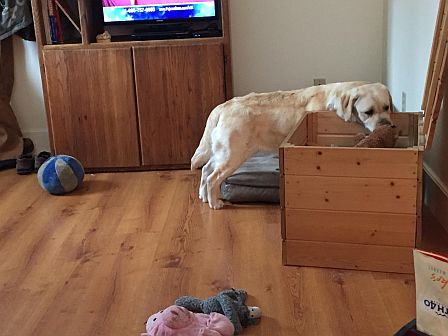
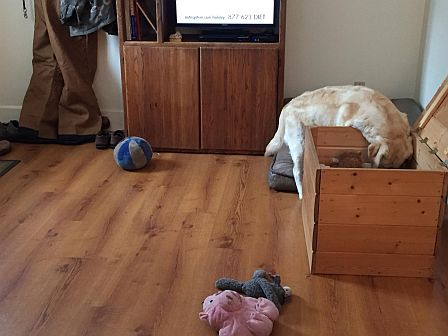
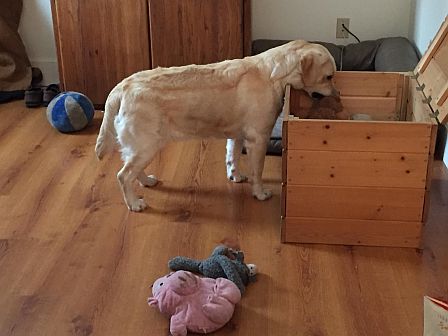
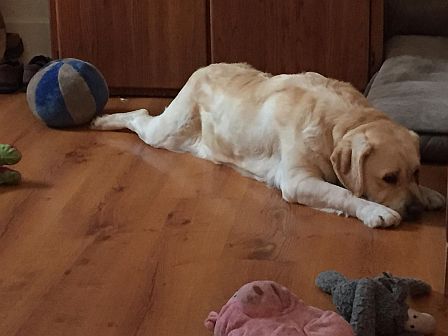
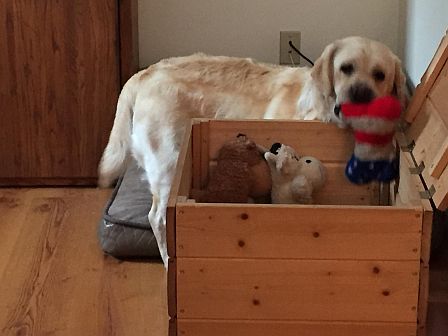
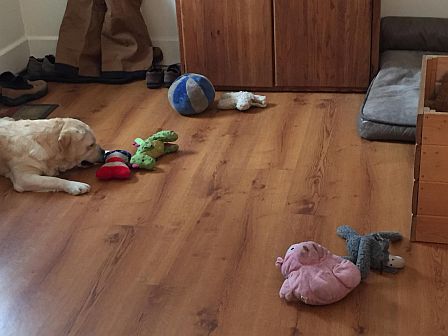
It’s never easy knowing you’ll be driving for two days with a puppy. It helps to have an older dog along.
We’ve been on the road with Luna and 15 week old Riley since yesterday.
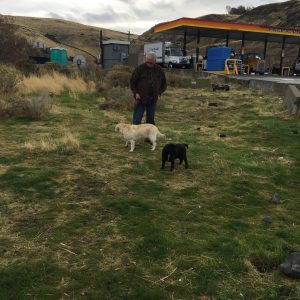
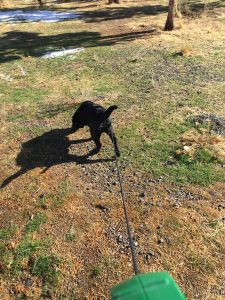
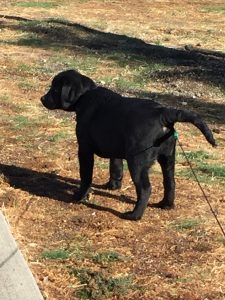
It is hard for a puppy to get the hang of going potty on leash, walking on the leash, and being crated in the vehicle for long periods of time, but this little girl took to it all quite naturally. We let them be together in one crate some of the time for company and comfort, and in separate crates for eating and rest.
In the hotel, they co-inhabited, and we’re the perfect hotel guests. Quiet and using good manners:
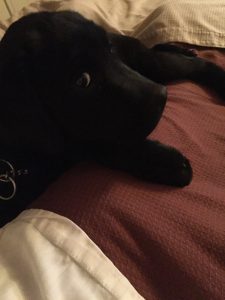
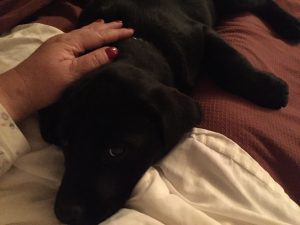
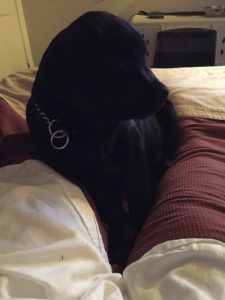
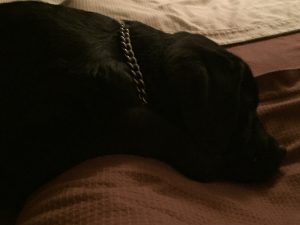
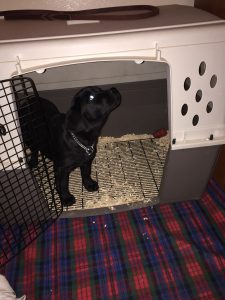
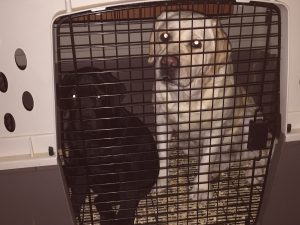
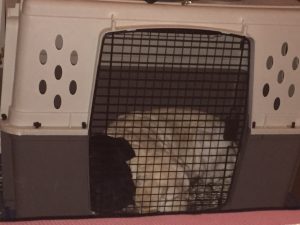
If you are traveling with a pet (or two), be sure to follow a few steps, so that hotels that are pet friendly will remain that way!
Traveling with a pet can be fun and rewarding.
In North Idaho, Fall means one thing… Winter is coming!
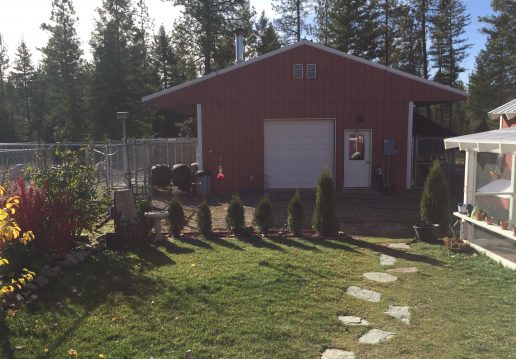
Our days are filled with getting the dogs ready for cold/bitter days. We do that, by first getting about five cords of wood cut and stacked. Our indoor kennel includes a large wood-burning stove. The cement floors are cold during winter, so as soon as the snow flies, each indoor kennel will be filled with wood shavings. Their water is indoors, so freezing is not an issue. We’re stocking up with wood shavings now. We also have two large electric heaters hanging from the ceiling on the kennel. Often we find that the dogs feel too warm during the winter, and go outside to lay on the frozen cement in their outdoor runs! Labradors love the cold.
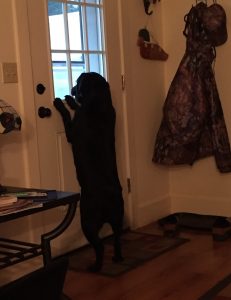
We found our first year here, that the dogs love to lie on the snow, but it causes them to burn calories quickly. This is the time of year we start to increase their food, putting a little more weight on them, so that they go through the winter without losing weight.
So, while the dogs are soaking up the beautiful fall sunshine, and growing their winter coats, we are busy thinking winter, and preparing the dogs and kennel for it!
Enjoy this fall image from the area that I took a few days ago. It’s beautiful here in the fall:
